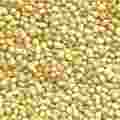Coriander fruits are a common spice in many countries of Europe, Northern Africa, West, Central and South Asia. In the Mediterranean region, coriander cultivation dates back to ancient Egypt; coriander is also mentioned in the Bible, where it is compared to manna (see pomegranate). In Europe, coriander is known since the Middle Ages (see gale about its use in medieval and Renaissance beer brewing).
Coriander is an essential part of curry powder (see curry leaves) and Indian masalas as well in Northern India (garam masala, see cumin) as in the South (sambaar podi, see cumin); furthermore, Ethiopian berbere, which much resembles Indian spice mixtures, contains coriander fruits (see long pepper). Lastly, it should be noted that also Latin American cuisine makes much use of them. Roasting or frying, much practiced in India and Sri Lanka, enhances the flavour.
Origin
Probably Eastern Mediterranean (Greece) or Asia Minor.
The coriander grown in Russia and Central Europe (var. microcarpum) has smaller fruits (less than 3 mm) and contains more essential oil than the oriental variety var. vulgare (greater than 3 mm), which is cultivated for fruits and leaves.
Sensory quality
Almost everybody would agree that the fruits’ aroma is pleasant. It is usually described warm, nutty and spicy; some even find orange-like quality in it

